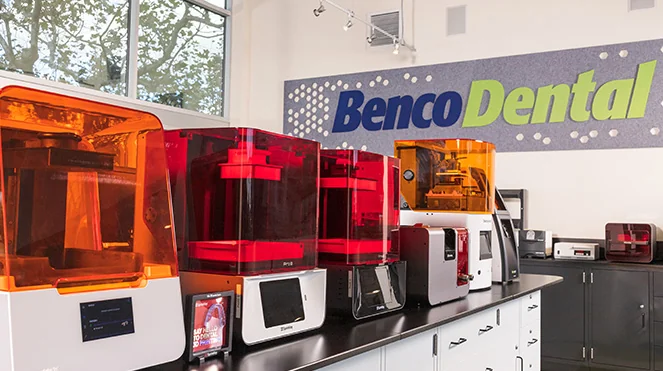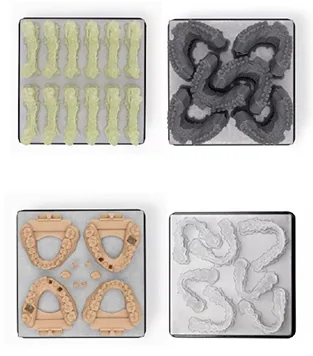



3D printing is the catalyst for digital dentistry. It’s known for reliability and high quality. Much has changed since the first desktop 3D printers became available to the dental industry. A few years ago, 3D printers were only affordable to the largest dental labs, now they are a common sight in labs and practices of any size. Dental 3D printers feature a light or laser that polymerize a liquid with the computer-guided precision required to produce small objects with intricate details.
![]()
Precision
Dental 3D printing technology enables the creation of highly precise and accurate dental prosthetics, such as crowns, bridges, and implants. It allows for intricate details and custom fits, reducing the margin of error associated with traditional manual techniques. This precision ensures better clinical outcomes and patient satisfaction.
![]()
Enhanced Patient Experience
Dental 3D printing enhances the overall patient experience in several ways. Patients benefit from shorter treatment times, as digital impressions are quicker and less uncomfortable than traditional impressions using messy materials. Moreover, the ability to provide customized, comfortable dental appliances contributes to improved patient comfort and satisfaction.
![]()
Streamlined Workflow
3D printing streamlines the dental workflow by eliminating many labor-intensive and time-consuming steps involved in traditional manufacturing methods. Digital scans and CAD/CAM (Computer-Aided Design/Computer-Aided Manufacturing) systems allow for faster and more efficient case planning, design, and production of dental restorations.
![]()
Unlimited Customization
Dental 3D printing offers unparalleled customization options. Dentists and technicians can create patient-specific dental appliances that perfectly match the individual’s anatomy and preferences. This level of customization leads to better aesthetics, function, and patient outcomes.
![]()
Cost Effective Solutions
While the initial investment in dental 3D printing equipment may be significant, it often leads to long-term cost savings. The technology reduces material waste, labor costs, and the need for outsourcing, ultimately resulting in more cost-effective solutions. Additionally, fewer remakes and adjustments due to improved precision can save both time and money.
![]()
Seamless Integration
Dental 3D printing can seamlessly integrate into existing dental practices and laboratories. Many 3D printing systems and software can interface with common dental CAD programs, allowing for a smooth transition. This integration not only enhances efficiency but also enables dentists to offer a broader range of services to their patients.

100% financing means you’ll hit the ground running. Plus, your cash remains untouched and
intact for savings, working capital or expenses.
You’ll get the things you need upfront, with no waiting.
Looking to learn more about 3D Printers? Read through our frequently asked questions
to better understand how 3D Printers can help your practice!
Dental 3D printers can produce applications such as:

Today, three 3D printing technologies are common in dental: stereolithography (SLA), digital light processing (DLP) and material jetting. Each technology can deliver the precision and accuracy needed for dental applications, but quality can vary among different machines and systems.
Dental 3D printers can start at a few thousand dollars for resin desktop 3D printers (SLA or DLP) ot up to tens of thousands of dollars for metal 3D printers designed for direct production. Some manufacturers only make dental 3D printers while other have developed specific dental product lines.
Entry-level desktop SLA or DLP 3D printers start around $1,000 and can be used to produce molds using a special casting resin. Industrial-grade dental additive manufacturing systems can cost up to tens of thousands of dollars. Dental 3D printers’ prices vary based on several factors:
We’re happy to help you with any additional questions! Please fill in the form below, and a member of our
OneVisit team will reach out to you.